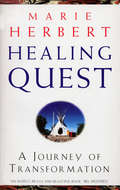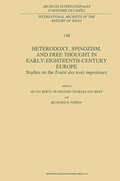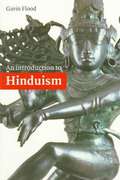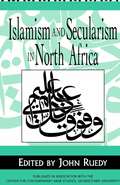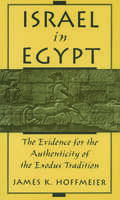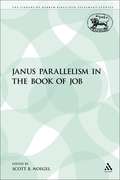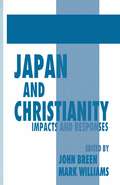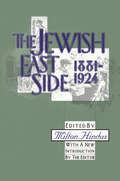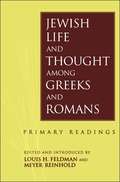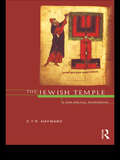- Table View
- List View
Healing Quest: A Journey of Transformation
by Marie HerbertWhen her two daughters were approaching the finish of their education Marie Herbert felt the need to mark the end of the child-rearing phase of her life by a rite of passage, a way to find herself a new place in the grand scheme of things. Long drawn to the Native American spiritual tradition, she planned a visit to the United States and an extraordinary journey of personal transformation under the guidance of Native American Healers. However, the end of her time of motherhood coincided tragically with the sudden death of one of her daughters and so her odyssey was to become far sadder and more urgent than she could have imagined. HEALING QUEST is the fascinating description of Marie Herbert's inner and outer journey of the heart. Vivid portraits of the people she met along the way are combined with honest accounts of the change in her feelings - together with ideas about how the readers, too, may learn from what she experienced and so gain insights into his or own life, whether in practical, emotional or spiritual terms.
Her Testimony is True: Women as Witnesses According to John (The Library of New Testament Studies #125)
by Robert MacciniIn Her Testimony is True, the Gospel of John is analysed as a rhetorical work that uses the metaphor of a trial in order to persuade readers that the Messiah is Jesus. John's presentation of women as witnesses in that trial is examined within the framework of Jewish law and custom regarding women as witnesses. Maccini concludes that the role of the women as witnesses follows no stereotypical pattern; that the women as witnesses, like the men, are treated as individuals, not as a class; and that in no case do any of the women bear witness in a way that breaches Jewish law and the custom of the contemporary culture.
Heterodoxy, Spinozism, and Free Thought in Early-Eighteenth-Century Europe: Studies on the Traité des Trois Imposteurs (International Archives of the History of Ideas Archives internationales d'histoire des idées #148)
by Silvia Berti Françoise Charles-Daubert R. H. Popkin'the oldest biography of Spinoza', La Vie de Mr. Spinosa, which in the manuscript copies is often followed by L'Esprit de M. Spinosa. Margaret Jacob, in her Radical Enlightenment, contended that the Traite was written by a radical group of Freemasons in The Hague in the early eighteenth century. Silvia Berti has offered evidence it was written by Jan Vroesen. Various discussions in the early eighteenth century consider many possi ble authors from the Renaissance onwards to whom the work might be attributed. The Trois imposteurs has attracted quite a bit of recent attention as one of the most significant irreligious clandestine writings available in the Enlightenment, which is most important for understanding the develop ment of religious scepticism, radical deism, and even atheism in the seventeenth and eighteenth centuries. Scholars for the last couple of decades have been trying to assess when the work was actually written or compiled and by whom. In view of the widespread distribution of manu scripts of the work all over Europe, they have also been seeking to find out who was influenced by the work, and what it represented for its time. Hitherto unknown manuscripts are being turned up in public and private libraries all over Europe and the United States.
Household Conversion Narratives in Acts: Pattern and Interpretation (The Library of New Testament Studies #123)
by David MatsonUsing features of the narrative-critical method, this book offers an innovative approach to a notable phenomenon in the book of Acts: the conversion of entire households to the Christian faith. When viewed against the household mission of the seventy(-two) messengers in Luke, the stories of Cornelius, Lydia, the Roman jailer and Crispus comprise a pattern of evangelistic activity that provides a common framework for their interpretation. Repetition and variation of the pattern offer important clues for the way each story functions within the wider context of Acts, opening up new lines of interpretation as well as new levels of unity/disunity between the Lukan writings.
Human Freedom and the Logic of Evil: Prolegomenon to a Christian Theology of Evil (Library of Philosophy and Religion)
by Richard WorsleyWorsley argues that it is rational to believe in a realist, loving God in the face of evil. Beginning with a critique of Alvin Plantinga, he shows that human freedom is highly complex, and so depends upon complex structures in nature. These are both necessary for freedom but also sufficient for natural evil. He offers close analysis of the evolution of the human brain. The book develops a parallel argument that human evil stems from the evolution of personality.
I Am in John's Gospel: Literary Function, Background and Theological Implications (The Library of New Testament Studies #124)
by David M. BallHere is a set of literary studies, in which various criteria from narrative criticism are employed to determine the literary function of 'ego eimi' in the Gospel of John. How does the phrase contribute? What role does it play in the portrayal of Jesus as the dominant character of the Gospel in Johannine irony? There is a greater interaction between different forms of saying than has generally been acknowledged, and Ball draws out a number of implications of his findings for other areas of Johannine study.
Imperial Cult and Commerce in John's Apocalypse (The Library of New Testament Studies #132)
by J. Nelson KraybillDrawing evidence from ancient literature, coins, inscriptions and artwork, Kraybill points to the penetration of the Roman imperial cult (emperor worship) into commercial settings as a primary concern of the Apocalypse. By the time John was on Patmos, people in Asia Minor could not 'buy or sell' without giving idolatrous allegiance to Rome. Imperial cult and commerce blended in guild halls, the banking industry and the market place. John calls readers to 'come out from' pagan loyalties of Roman imperial society and give full allegiance to a New Jerusalem of justice and equality under the rule of Christ.
In Conversation with Jonah: Conversation Analysis, Literary Criticism and the Book of Jonah (The Library of Hebrew Bible/Old Testament Studies)
by Raymond F. Person Jr.The author analyses the various conversations that occur between the characters in the Jonah narrative and the 'conversation' that occurs between the text and its readers. The study opens with an introduction to the field of conversation analysis, with a focus on one feature of conversation analysis-that a fundamental structure in the organization of language is adjacency pairs (for example, question/answer and invitation/refusal). Person notes how complex the adjacency pairs in the Jonah narrative are, and shows how they contribute to the narrative elements of plot, characterization, atmosphere and tone. He then refines reader-response theory (especially that of Wolfgang Iser) and provides a reader-response commentary on the book. The study ends with an analysis of the history of the interpretation of the book of Jonah, demonstrating how the structures of adjacency pairs in the narrative have been successfully and unsuccessfully interpreted.
In Praise of Religious Diversity
by James WigginsFirst Published in 1996. Routledge is an imprint of Taylor & Francis, an informa company.
In Praise of Religious Diversity
by James WigginsFirst Published in 1996. Routledge is an imprint of Taylor & Francis, an informa company.
In Search of the Sacred
by Clinton BennettThis text traces the growth and development of two related disciplines, anthropology and the study of religions. Locating these disciplines within the intellectual climate of the 19th century, the study considers the contributions of scholars such as James George Frazer, F. Max Muller, Emile Durkheim, Mary Douglas and Clifford Geertz, within an historical framework. The author argues that both anthropologists and students of religion have abandoned an objective approach in favour of personal engagement with their subjects, replacing observation with conversation, monologue with dialogue, a text-based with people-based approach. He reveals how each discipline has influenced the other both in terms of methodology and by the provision of data. The book also explores the criticism levelled at both disciplines that they have aided colonial domination of the developing world.
Inside the Vatican: The Politics And Organization Of The Catholic Church
by Thomas S.J. ReeseDrawing on more than a hundred interviews with Vatican officials, this book affords a firsthand look at the people, the politics, and the organization behind the institution. Throughout, revealing and colorful anecdotes from church history and the present day bring the unique culture of the Vatican to life.
Inside the Vatican: The Politics And Organization Of The Catholic Church
by Thomas S.J. ReeseDrawing on more than a hundred interviews with Vatican officials, this book affords a firsthand look at the people, the politics, and the organization behind the institution. Throughout, revealing and colorful anecdotes from church history and the present day bring the unique culture of the Vatican to life.
An Introduction to Hinduism (PDF)
by Gavin FloodThis book provides a much-needed thematic and historical introduction to Hinduism, the religion of the majority of people in India. Dr Flood traces the development of Hindu traditions from their ancient origins, through the major deities of Visnu, Siva and the Goddess, to the modern world. Hinduism is discussed as both a global religion and a form of nationalism. Emphasis is given to the tantric traditions, which have been so influential; to Hindu ritual, which is more fundamental to the life of the religion than are specific beliefs or doctrines; and to Dravidian influences from south India. An Introduction to Hinduism examines the ideas of dharma, particularly in relation to the ideology of kingship, caste and world renunciation. Dr Flood also introduces some debates within contemporary scholarship about the nature of Hinduism. It is suitable both for the student and for the general reader.
Islamism and Secularism in North Africa
by NA NAThis book provides an excellent handbook to the Islamic movements in Morocco, Tunisia, Algeria, and Libya and fills a major gap in the scholarship on Islam and the Arab West.
Israel in Egypt: The Evidence for the Authenticity of the Exodus Tradition
by James K. HoffmeierScholars of the Hebrew Bible have in the last decade begun to question the historical accuracy of the Israelite sojourn in Egypt, as described in the book of Exodus. The reason for the rejection of the exodus tradition is said to be the lack of historical and archaeological evidence in Egypt. Those advancing these claims, however, are not specialists in the study of Egyptian history, culture, and archaeology. In this pioneering book, James Hoffmeier examines the most current Egyptological evidence and argues that it supports the biblical record concerning Israel in Egypt.
Janus Parallelism in the Book of Job (The Library of Hebrew Bible/Old Testament Studies)
by Scott B. NoegelNoegel here examines instances of Janus parallelism in the Hebrew Bible with particular attention to the book of Job, and with excursuses on the device in other ancient Near Esatern literatures. The author finds the punning device integral to the book of Job, serving a referential function. Within the context of dialogue and debate, the polysemous statements resemble a poetry contest among the participants (Job, his friends, and Elihu). The book also treats the relationship between wordplay and wisdom literature; polysemy as preserved in the Greek, Aramaic, Latin, and Syriac translations; and the impact of Janus parallelism on textual criticism and the unity of the book of Job.
Japan and Christianity: Impacts and Responses
by John Breen Mark WilliamsMuch has been written of the 'success' of the early missions to Japan during the decades immediately following the arrival of the first Jesuits in 1549. The subsequent 'failure' of the faith to put down roots strong enough to survive this initial wave of enthusiasm is discussed with equal alacrity. The papers in this volume, born of a Conference marking the centenary of the Japan Society of London, represent an attempt to reassess the contact between Christianity and Japan in terms of a symbiotic relationship, a dialogue in which the impact of Japan on the imported religion is viewed alongside the more frequently cited influence of Christianity on Japanese society. Here is a dynamic cultural encounter, examined by the papers in this volume from a series of political, literary and historical perspectives.
Jesus Of The Apocalypse
by Barbara ThieringIn her controversial 1992 bestseller Jesus the Man, Barbara Thiering first showed how the pesher method of 'decoding' two separate levels of meaning found in the Dead Sea Scrolls could be used by applying it to the Gospels, and presented a completely new historical interpretation of the life of Jesus Christ. Now, in a new work of remarkable research and scholarship, she sets out to unravel the mysteries that have long surrounded the elusive complexities of the Book of Revelation. 'It was not,' she writes, 'about vision and apocalypse, but about the profoundly important history of the Christian movement from AD 1 to AD 114.'In Jesus of the Apocalypse, Barbara Thiering presents a new and significant view of the development of Christianity from the time of the crucifixion until the second century AD. She argues that Jesus was no solitary preacher appearing suddenly on the shores of Lake Galilee: he was a central figure in a major political movement to overthrow the pagan Roman empire. Although crucified, he did not die on the cross, and he, and subsequently his sons, took an important role in the evolution of the new underground religion which was developing out of Judaism.With detective-like perseverance Theiring unfolds the mystery of words, meanings and places that have been allowed to pass unchallenged, including a radical new interpretation of such mystical themes as the four horsemen of the Apocalypse, the seven seals. the Beast whose number is 666, the Great Harlot clothed in scarlet and purple. In so doing, she provides an absorbing and enlightening background to a period that has so often been seen more through the implications of scripture than the facts of history.
Jewish Apocalyptic and its History (The Library of Second Temple Studies #20)
by Paolo SacchiThis translation of L'apocalittica giudaica e la sua storia makes Professor Sacchi's innovative thesis on Jewish apocalyptic available to a wider, English-reading audience. Sacchi argues that the term 'apocalyptic' is a modern invention, deriving from the wish to conceptualize the field of research on the affinities between the Apocalypse of John and other works of its time. These affinities do not just relate to literary character and form but also in part to content. Focusing on the material of 'Enoch' Sacchi concludes that what is needed is a more precise, literary and historical definition of 'apocalyptic'.
The Jewish East Side: 1881-1924 (The Library of Conservative Thought)
by Milton HindusThis book, originally published as The Old East Side, is a collection of literature and documents ranging from the autobiography of the sculptor Jacob Epstein and the novels of Abraham Cahan to the reporting of William Dean Howells and the fictional reconstruction of a vanished world by Henry Roth. The world is that of the old shtetl transplanted to a new, growing country, where "the ghetto" (in the years 1881-1924) was an unstable mixture of nostalgic elements and the pressures of American economic and social reality.The productivity, both intellectual and material, of the section of New York known as the East Side during those forty years around the turn of the twentieth century has become a legend among many Jews in this country and deserves to become better known to many more of other ethnic origins. The lower East Side was paradoxically a wilderness to be traversed and a portion of that "promised land" which had been glimpsed with so much hope from afar. To wonderfully talented and observant children, like Jacob Epstein, the streets there in the 1880s were as filled with excitement as those of the Arabian Nights. To serious philosophic young men like Morris Raphael Cohen, they were as challenging as the marketplace of Athens had once been to Socrates to achieve intellectual enlightenment and the improvement of the social order.The conditions of abominable crowding and poverty described in the sociological tracts of Jacob Riis, Lillian Wald, and others are better known perhaps to the average reader than the accounts of such pleasures as the dancing schools, the Yiddish theaters, the cafes, the lectures, the literary ferment and activities, described in the pages of Abraham Cahan and Hutchins Hapgood. But all the views presented in The Jewish East Side, both dark and bright, are recognizably parts of the same picture. This book will be of value to sociologists, historians, researchers specializing in Judaic studies, and students of literature.
The Jewish East Side: 1881-1924 (The Library of Conservative Thought)
by Milton HindusThis book, originally published as The Old East Side, is a collection of literature and documents ranging from the autobiography of the sculptor Jacob Epstein and the novels of Abraham Cahan to the reporting of William Dean Howells and the fictional reconstruction of a vanished world by Henry Roth. The world is that of the old shtetl transplanted to a new, growing country, where "the ghetto" (in the years 1881-1924) was an unstable mixture of nostalgic elements and the pressures of American economic and social reality.The productivity, both intellectual and material, of the section of New York known as the East Side during those forty years around the turn of the twentieth century has become a legend among many Jews in this country and deserves to become better known to many more of other ethnic origins. The lower East Side was paradoxically a wilderness to be traversed and a portion of that "promised land" which had been glimpsed with so much hope from afar. To wonderfully talented and observant children, like Jacob Epstein, the streets there in the 1880s were as filled with excitement as those of the Arabian Nights. To serious philosophic young men like Morris Raphael Cohen, they were as challenging as the marketplace of Athens had once been to Socrates to achieve intellectual enlightenment and the improvement of the social order.The conditions of abominable crowding and poverty described in the sociological tracts of Jacob Riis, Lillian Wald, and others are better known perhaps to the average reader than the accounts of such pleasures as the dancing schools, the Yiddish theaters, the cafes, the lectures, the literary ferment and activities, described in the pages of Abraham Cahan and Hutchins Hapgood. But all the views presented in The Jewish East Side, both dark and bright, are recognizably parts of the same picture. This book will be of value to sociologists, historians, researchers specializing in Judaic studies, and students of literature.
Jewish Identity and Civilizing Processes
by S. RussellJewish Identity and Civilizing Processes examines the history of Jewish experience in Western Europe, from the early Middle Ages to the twentieth century, using the sociological theory and method of Norbert Elias. Attention is focused on the notion of interdependence and the intertwining processes of the civilization of behaviour and character and the formation of modern states as these specifically affected Jewry and help to shed light on the problem of anti-Semitism.
Jewish Life and Thought among Greeks and Romans: Primary Readings
by Louis H. FeldmanTwo of the world's leading authorities on the classical era bring together a comprehensive treasury of sources on Judaism in the ancient period.
The Jewish Temple: A Non-Biblical Sourcebook
by Robert HaywardRobert Hayward offers a careful analysis of surviving accounts of the Temple and its service. All the central texts are provided in translation, with a detailed commentary. While descriptions of the Temple and its service are available, discussions of the meaning of these things are less easily found. This study clearly illustrates how the Temple was seen as a meeting point between heaven and earth, its service being an earthly representation of heavenly reality. Jews regarded the Temple service therefore as having significance for the whole created world. The Jewish Temple offers a valuable collection of materials both for those looking for an introduction to the topic and for the scholar interested in grasping the meanings beyond those texts.
